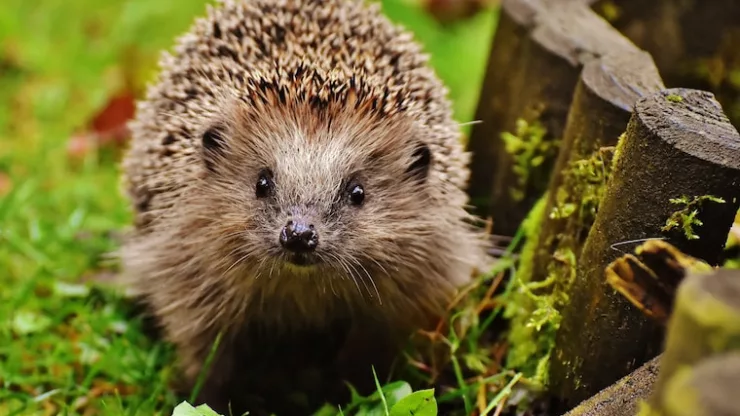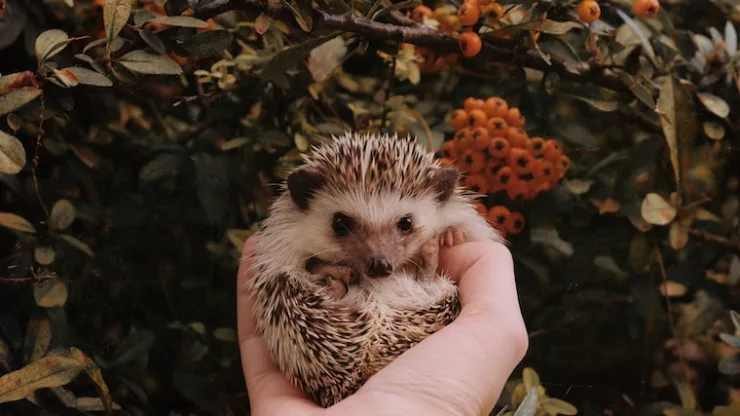If you thought hedgehogs were only found in the countryside, you’d be surprised to know that these spiky creatures are also thriving in urban areas.
Despite facing several challenges, urban hedgehogs are important residents of our cities and gardens.
Jump to Section
Introduction
Hedgehogs have been around for millions of years and are found in many parts of the world.
In the UK, they are a treasured sight, and many people have fond childhood memories of spotting hedgehogs in their gardens.
However, the hedgehog population in the UK has declined significantly in recent years.
One of the reasons for this decline is the destruction and fragmentation of their natural habitats.
Fortunately, hedgehogs have adapted to urban environments and can be found in many cities and towns.
Why Urban Hedgehogs are Worth Knowing About
Urban hedgehogs are not only adorable and fascinating creatures, but they also play an essential role in the urban ecosystem.
Hedgehogs are natural pest controllers and primarily feed on insects and invertebrates like slugs, snails, and earthworms.
By keeping these populations in check, hedgehogs help maintain a healthy balance in our gardens and green spaces.
The Life of an Urban Hedgehog
Habitat and Lifestyle
Hedgehogs are nocturnal creatures and are most active at night. During the day, they sleep in nests made from leaves, grass, and other materials.
In urban areas, hedgehogs can be found in parks, gardens, and other green spaces.
They prefer areas with dense vegetation and natural shelter, such as piles of leaves or logs.
Diet and Feeding Habits
Hedgehogs are omnivores, which means they eat both plants and animals.
In urban areas, their diet primarily consists of insects and invertebrates like beetles, caterpillars, and slugs.
They also eat small mammals, birds, and eggs. To find food, hedgehogs use their excellent sense of smell and can travel up to a mile in a night.
Reproduction and Mating
Hedgehogs mate during the summer months, and females can have up to two litters a year.
After a gestation period of about a month, the female gives birth to four to five hoglets.
The hoglets are born blind and deaf and are entirely dependent on their mother for the first few weeks.
Challenges Faced by Urban Hedgehogs
Habitat Destruction and Fragmentation
One of the most significant challenges faced by urban hedgehogs is habitat destruction and fragmentation.
As cities expand and green spaces are developed, hedgehogs lose their natural habitats and corridors they use to travel from one area to another.
Human Interaction and Harm
Hedgehogs are often harmed by human activities, such as garden maintenance and construction. Lawn mowers and strimmers can injure or kill hedgehogs, and pesticides can poison them.
Predation and Threats
Hedgehogs face many predators in urban areas, including dogs, cats, and foxes. They’re also at risk of being hit by cars when they cross roads.
How to Help Urban Hedgehogs
Creating Hedgehog-Friendly Gardens
One of the best ways to help urban hedgehogs is by creating a hedgehog-friendly garden.
Here are some tips for making your garden safe and welcoming for these spiky creatures:
| Feature | Description |
|---|---|
| Wild areas | Leave an area of your garden wild with long grass and logs. |
| Hedgehog houses | Provide a hedgehog house for them to sleep in during the day. |
| Hedgehog highways | Cut a small hole in your fence to allow hedgehogs to move through your garden. |
| Pesticide-free | Avoid using pesticides and chemicals in your garden. |
Providing Food and Water
Hedgehogs need a regular supply of fresh water and food.
You can leave out a shallow dish of water and put out hedgehog food, such as tinned dog or cat food or specially made hedgehog food.
Reducing Harmful Interactions
To reduce the risk of harming hedgehogs, avoid using garden machinery at night and check long grass and piles of leaves before raking or strimming.
The Importance of Urban Hedgehogs in Urban Ecosystems
Urban hedgehogs may be small, but they play an essential role in maintaining a healthy ecosystem in our cities and towns.
By controlling pest populations and keeping our gardens healthy, hedgehogs help create a sustainable urban environment.
FAQ
How can I tell if there are hedgehogs in my garden?
Hedgehogs leave telltale signs that they’ve been in your garden, such as droppings, footprints, and dug-up grass.
You can also set up a camera trap or look out for them at night.
What should I do if I find a sick or injured hedgehog?
If you find a sick or injured hedgehog, contact your local wildlife rescue center or vet.
They’ll be able to provide advice on how to care for the hedgehog and where to take it for treatment.
Can I keep a hedgehog as a pet?
Hedgehogs are wild animals and should not be kept as pets.
It’s illegal to keep a wild hedgehog without a license, and they require specific care and attention that most people cannot provide.
How can I get involved in hedgehog conservation?
There are many ways to get involved in hedgehog conservation, such as volunteering with local wildlife charities, donating to wildlife organizations, and spreading awareness about hedgehogs and their importance in our ecosystem.
I’m a nature enthusiast and creator of Metro Wilds and have spent years exploring the great outdoors.
With a passion for environmental conservation and sustainability, I have dedicated my career to writing about the beauty and wonders of nature, as well as the threats facing our planet.
Contact me at [email protected] for assistance.





